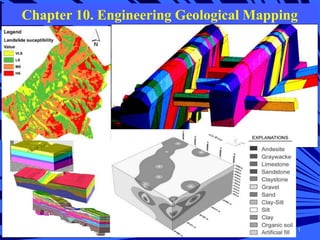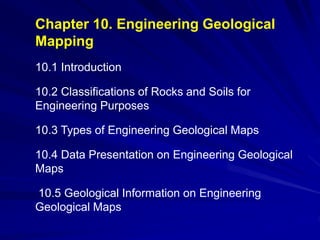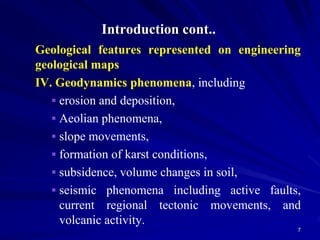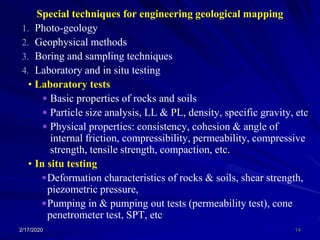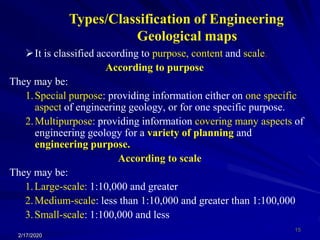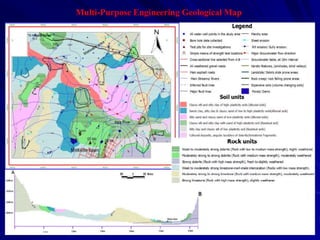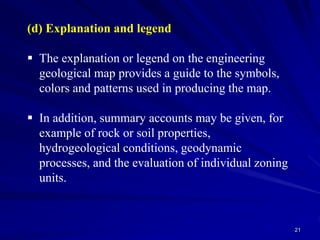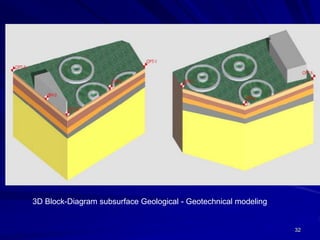This document discusses engineering geological mapping and provides details on:
1) The purpose of engineering geological maps is to provide basic information for land use planning, engineering works planning/design/construction/maintenance, and environmental planning.
2) Engineering geological maps represent characteristics of rocks/soils, hydrogeological conditions, geomorphological conditions, and active geodynamic phenomena.
3) Classification of rocks and soils on maps is based on properties indicating physical/engineering characteristics, such as mineralogy, texture, structure, and weathering state.
